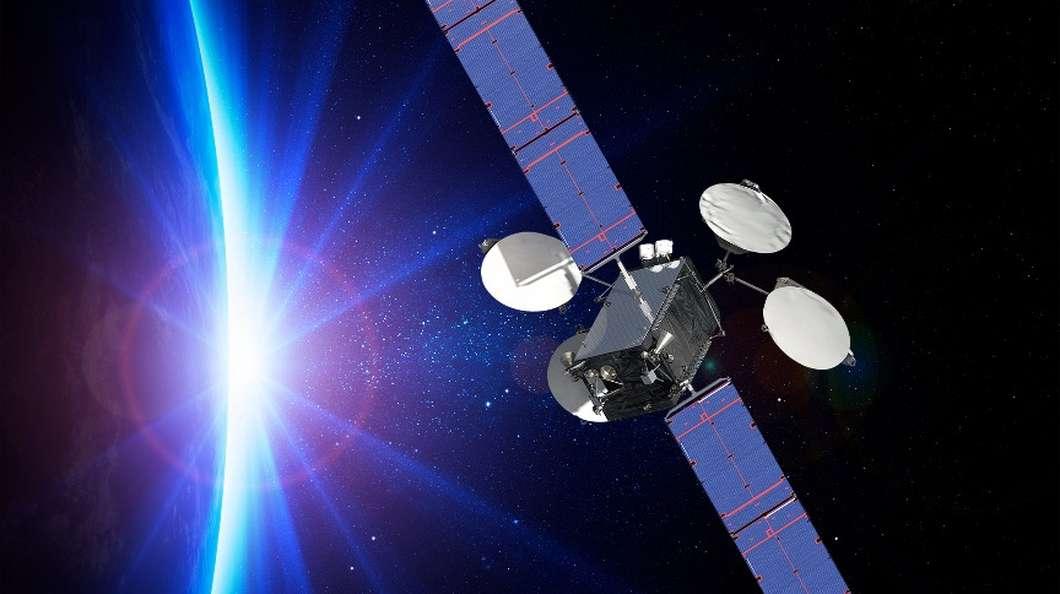Satellite Electric Propulsion 2025: Advancements, Key Players, and Industry Outlook

Satellite electric propulsion is revolutionizing the satellite industry by providing highly efficient, precise, and long-duration propulsion solutions that enable extended mission lifetimes and reduced fuel consumption. Unlike conventional chemical propulsion, electric propulsion uses electricity to accelerate ionized propellants such as xenon, delivering thrust with higher specific impulse and minimal propellant mass. This technology plays a vital role in satellite maneuvering, orbit-raising, station-keeping, and de-orbiting, becoming increasingly essential for managing large constellations in low Earth orbit (LEO) and complex geostationary satellites.
According to Straits Research, the global satellite electric propulsion sector was valued at USD 589.21 million in 2024 and is projected to grow from USD 613.37 million in 2025 to USD 845.91 million by 2033, expanding at a compound annual growth rate (CAGR) of 4.10% during the forecast period (2025–2033).
Recent Updates and Industry Trends in Satellite Electric Propulsion
Satellite electric propulsion technologies continue to advance with improvements in thruster designs, power efficiency, and propellant options. Ion thrusters and Hall effect thrusters dominate the market, while emerging concepts such as radio-frequency (RF) ion engines, pulsed plasma thrusters, and electrospray propulsion are under active development to offer enhanced performance and adaptability to varied mission profiles.
A key trend is the growing adoption of electric propulsion across satellite constellations deployed for broadband internet, Earth observation, and defense purposes. These systems enable cost savings by reducing launch mass and allow flexible in-orbit maneuvers to optimize satellite positioning and collision avoidance. Hyperscalers and satellite operators like Amazon’s Kuiper and OneWeb increasingly demand electric propulsion systems that support rapid de-orbit compliance and extended station-keeping for their large LEO constellations.
Integration of AI for power management and autonomous thrust control is shaping new propulsion modules, enabling real-time adjustments for optimal efficiency and longer operational life. Additionally, innovations focus on scaling propulsion for small satellites and CubeSats, expanding electric propulsion's reach to new space segments.
Regional and Country-wise Developments
-
United States: The US is a leader in satellite electric propulsion development, driven by government agencies like NASA and private aerospace firms advancing ion and Hall thruster technology. Collaborations with defense and commercial space companies support propulsion systems tailored for deep space exploration and mega-constellations. Startups and incumbents focus on boosting thruster durability and lowering power consumption.
-
Europe: European aerospace corporations emphasize green propulsion technologies, developing xenon alternative propellants and advanced Hall thrusters with reduced contamination risks. The European Space Agency (ESA) supports research on high-power thrusters for future interplanetary missions and geostationary satellites. Regional players integrate propulsion with satellite platform innovations emphasizing energy efficiency and sustainability.
-
China: China is rapidly expanding its electric propulsion capabilities with domestic manufacturers producing competitive thrusters for satellite navigation, communication, and Earth observation applications. State-backed space programs push for self-reliance in propulsion technologies amid increasing satellite launches and national constellation projects.
-
India: India is enhancing its propulsion technology through public-private partnerships, aiming at indigenous development of ion drive systems for satellite missions. Efforts focus on affordable, robust propulsion modules for both commercial and scientific satellites, supported by growing space infrastructure and government initiatives.
-
Japan and South Korea: Both countries develop precise, miniaturized electric propulsion solutions for small satellite constellations and advanced space exploration missions. Their expertise in power electronics and materials science fuels innovative thruster designs optimized for reliability and performance.
Impact of Global Tariffs on Satellite Electric Propulsion Sector
Though primarily a technology and hardware-driven sector, satellite electric propulsion faces indirect cost pressures from global tariffs imposed since 2024 on critical raw materials like rare gases (xenon), semiconductor components, and power electronics. Trade tensions between major economies such as the US, China, and Europe have driven up prices for specialized components used in power processing units and thruster assemblies.
In response, manufacturers are diversifying their supply chains, increasing efforts for localized component production, and investing in alternative propellant research to reduce dependency on scarce materials. Government programs encouraging domestic semiconductor fabrication and aerospace component manufacturing bolster local capabilities, mitigating tariff-related cost impacts.
While tariffs pose short-term challenges in production costs and procurement timelines, they accelerate innovation in supply chain resilience and material efficiency. These strategic adaptations ensure continued growth and technology development in satellite electric propulsion despite geopolitical uncertainties.
Recent Industry News
-
In early 2025, a major aerospace company introduced a next-generation Hall effect thruster with improved thrust-to-power ratio and extended operational lifespan for GEO satellites.
-
Collaborative research between an American startup and a European propulsion firm focused on integrating AI-enabled real-time propulsion monitoring and autonomous control, enabling adaptive thrust management during complex orbital maneuvers.
-
China launched multiple satellites equipped with domestically developed ion propulsion modules, demonstrating increased capability in orbit raising and station-keeping for expanding constellations.
-
The Indian Space Research Organisation (ISRO) announced plans to test indigenous electric propulsion systems in upcoming satellite missions aimed at both communication and remote sensing.
-
Advanced propulsion technologies for small satellites were showcased at a recent trade event in Japan, highlighting miniaturized ion thrusters designed for CubeSat constellation applications.
Summary
Satellite electric propulsion is a cornerstone technology enabling efficient, sustainable, and long-duration satellite missions across global space sectors. Advances in thruster designs, AI integration, and material innovation drive steady growth despite supply chain and tariff challenges. Robust regional developments and expanding adoption in large satellite constellations ensure that electric propulsion will remain pivotal for next-generation space exploration and commercial satellite operations.
- Vibnix Blog
- Politics
- News
- Liberia News
- Entertainment
- Technology
- Educação
- Art
- Causes
- Crafts
- Dance
- Drinks
- Film
- Fitness
- Food
- Jogos
- Gardening
- Health
- Início
- Literature
- Music
- Networking
- Outro
- Party
- Religion
- Shopping
- Sports
- Theater
- Wellness



